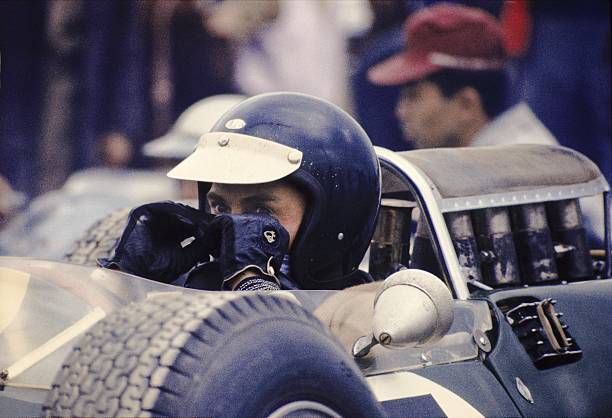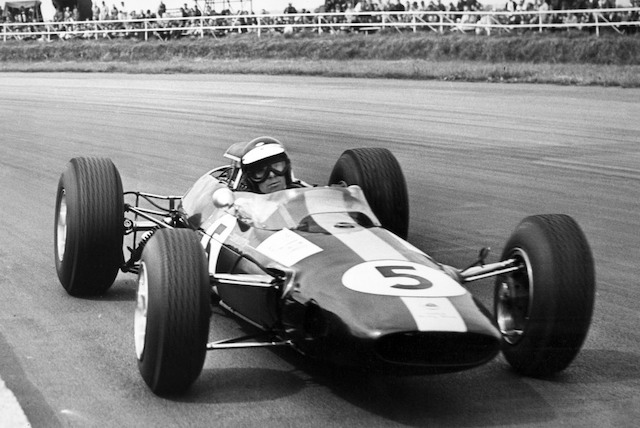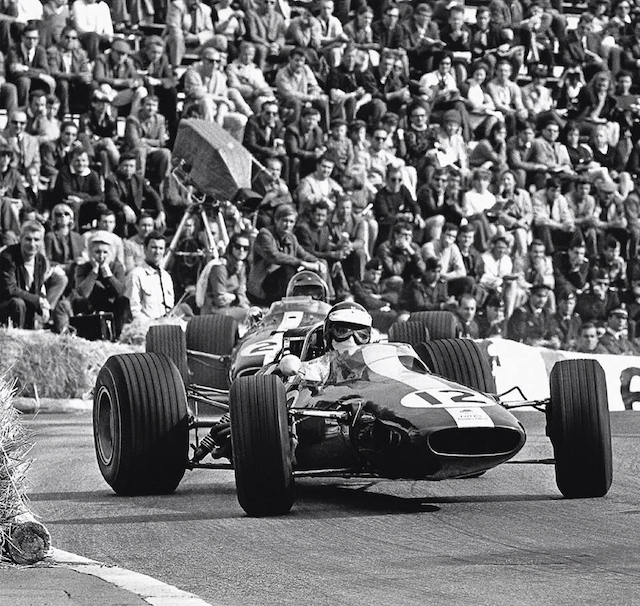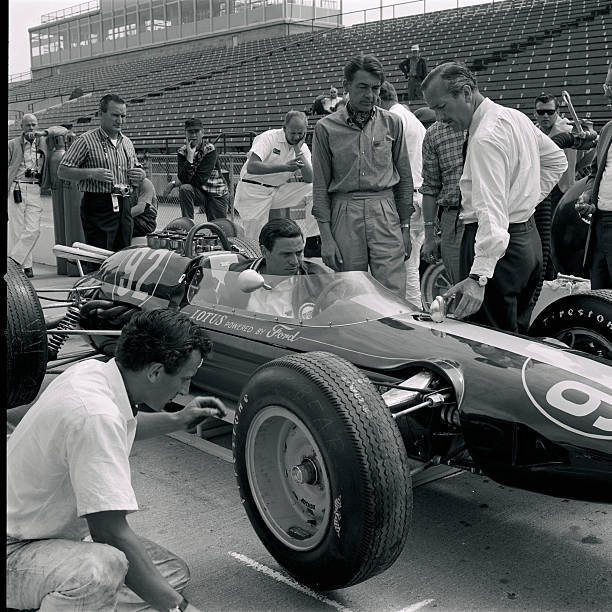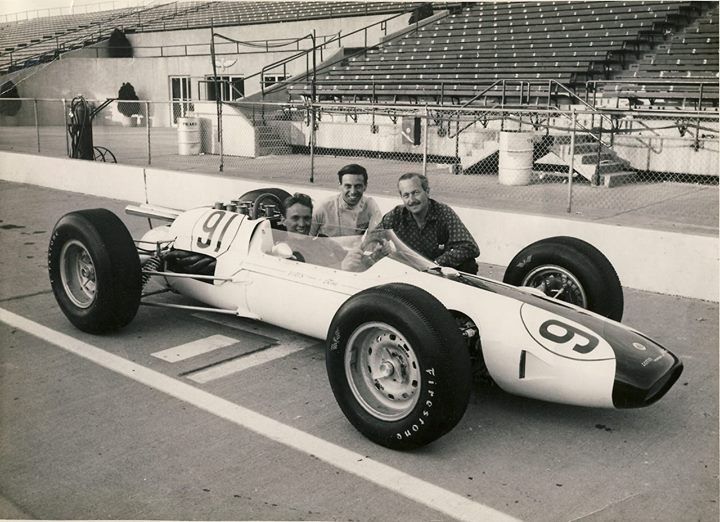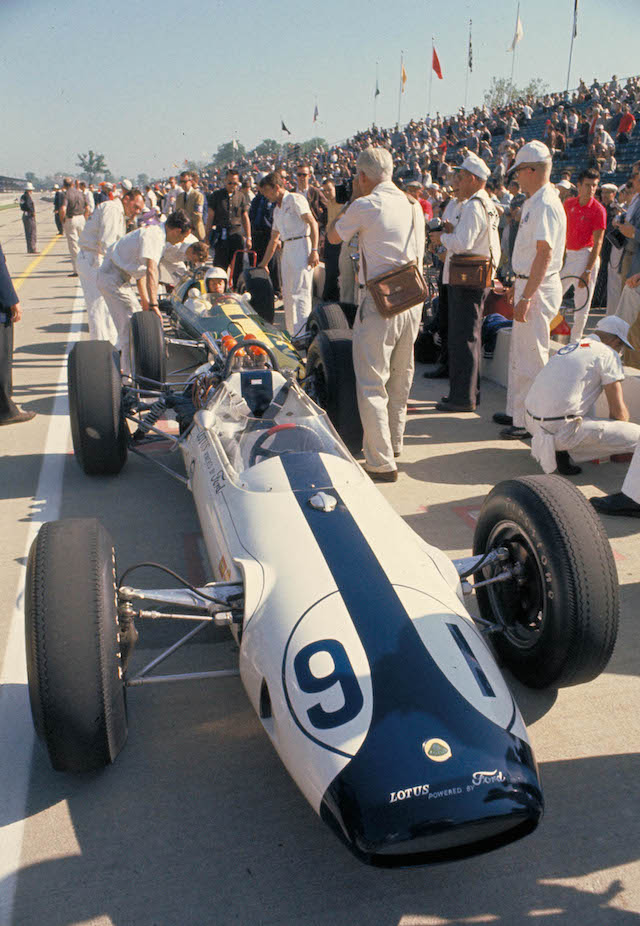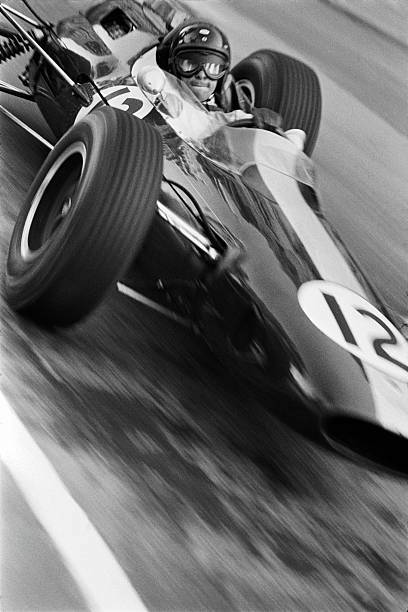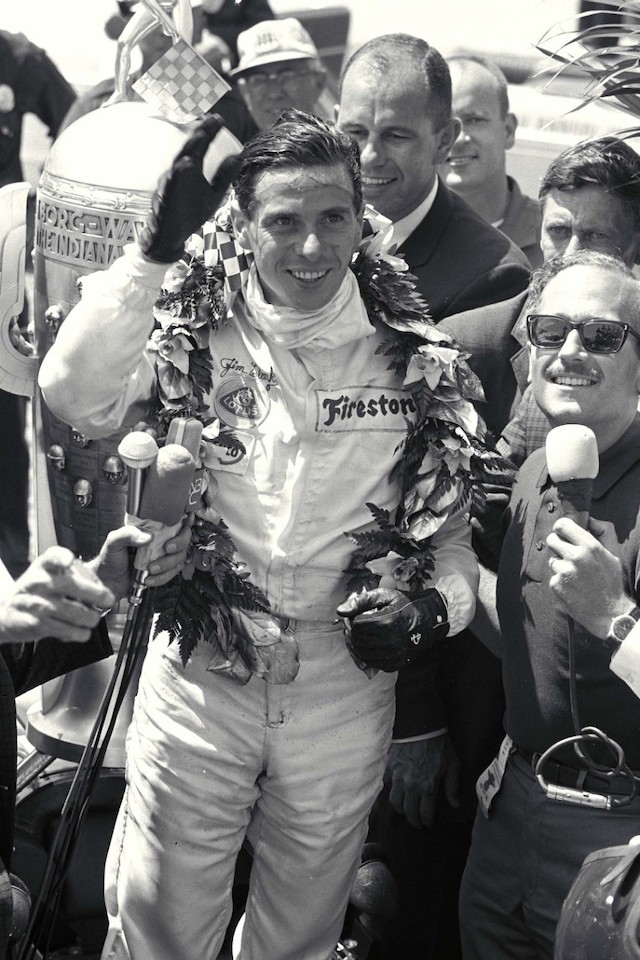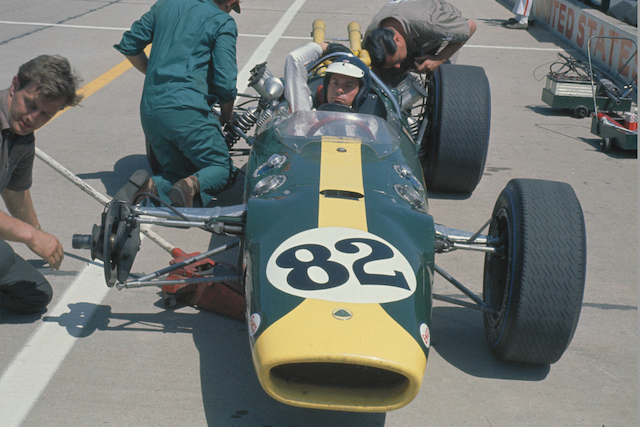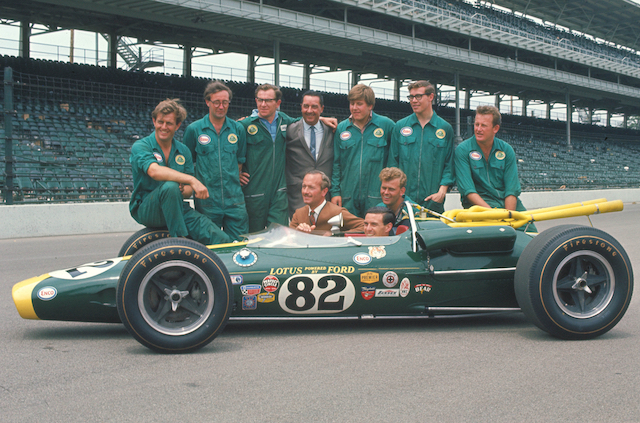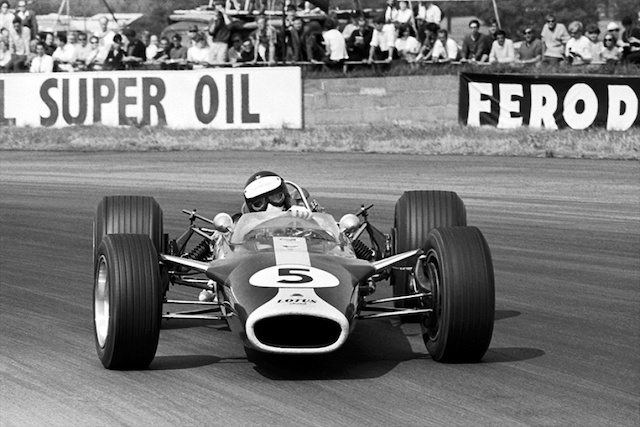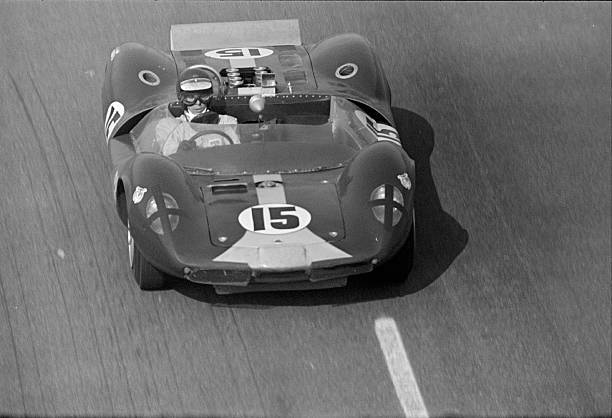By Peter M. DeLorenzo
Detroit. Racing a car, motorcycle or anything with some sort of power is a pursuit like no other. It is a passionate endeavor requiring an obsessive single-mindedness that consumes the people involved to a degree that outsiders find hard to understand. Ask any driver who has competed at the top level, and they will tell you that there is nothing half-assed about what they do, because the focus required is almost incomprehensible. Drivers talk about being in "the zone" - a strange state of mind that takes over their entire being while they're racing - when the faster they go the more things seem to slow down for them. They're aware of everything around them, but at the same time their focus on the task at hand is impenetrable, because anything less can result in a mistake that will likely have severe consequences. Racers are indeed a rare breed, willing to sacrifice everything for the pursuit of what they love to do, to the detriment of everything else. These racers have left an indelible mark on the sport. Drivers who were fierce competitors, flawed heroes and incredible, gifted talents. Their legacies are what make the sport of motor racing so fascinating. In the next few issues of "Fumes" I will recall some of my favorites. This week, we remember one of the greatest drivers in motorsports history, Jim Clark.
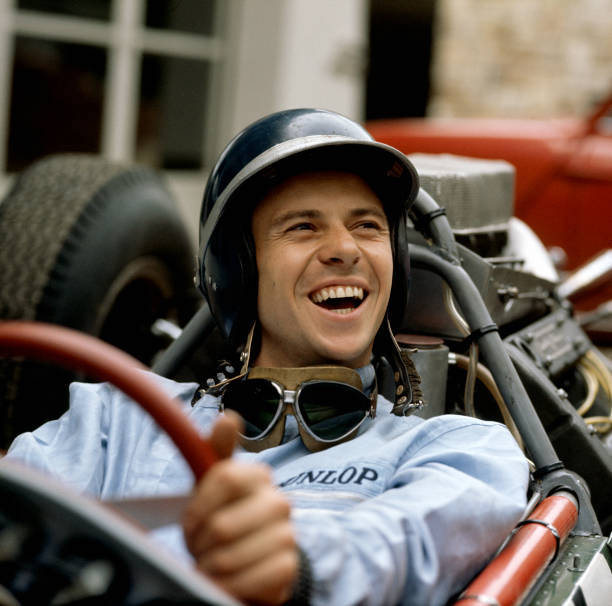
(Getty Images)
The extraordinarily gifted Jim Clark made his F1 debut in 1960 for Team Lotus as a replacement for John Surtees, who had gone to race at the Isle of Man motorcycle races. Clark won 25 Grand Prix races out of 72 starts; he also captured 33 pole positions and 28 fastest laps. He won the World Championship in 1963 (winning seven of ten races) and in 1965.
(Getty Images)
Jim Clark was simply brilliant behind the wheel. Wearing his distinctive dark blue helmet and dubbed "The Flying Scot," he simply dominated F1 in his era, at times demoralizing the opposition. Clark was not only blindingly fast, he was incredibly smooth and consistent as well. The term "genius" is often overused in today's world, but Clark was every bit that behind the wheel... and then some.
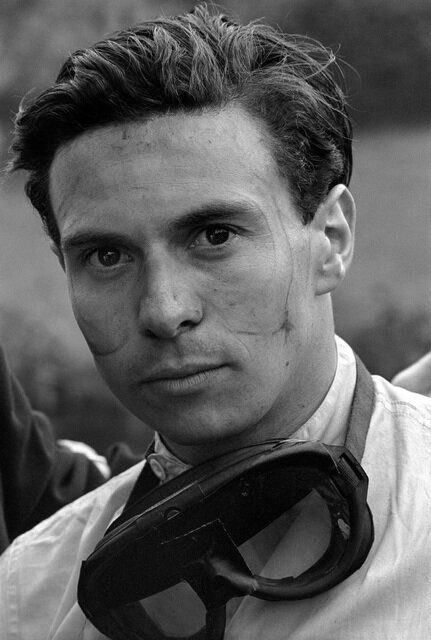
(Photo by Jesse Alexander)
Spa-Francorchamps, June 19, 1960. The intense stress of F1 back in the day was captured in Jim Clark's face by Jesse Alexander. In one of the most tragic days in the history of the sport, two drivers - Chris Bristow, and one of Clark's teammates, Alan Stacey - were killed during the race. This was after a practice which saw drivers Stirling Moss and Mike Taylor suffer serious injuries. Clark finished fifth that day in his No. 18 Lotus-Climax, but it hardly mattered. This famous photograph was taken immediately after Clark had been informed of the two deaths.
(Getty Images)
Silverstone, July 10, 1965. A classic shot of Jim Clark in his No. 5 Team Lotus 33 Climax on his way to the win in the British Grand Prix, his fourth victory in his "home" race. Graham Hill (No. 3 BRM P261) was second, and John Surtees (No. 1 Scuderia Ferrari 1512) finished third.
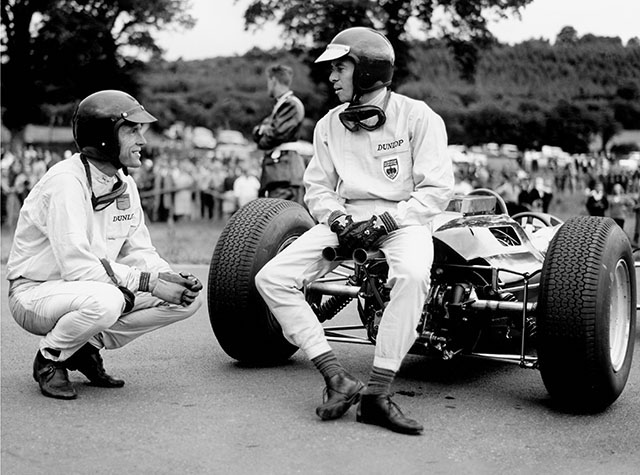
(LAT Photographic)
1964 Belgian Grand Prix, Spa-Francorchamps, June 14, 1964. Jim Clark (Lotus 25-Climax) talks to Dan Gurney (Brabham BT7-Climax) after both had just run out of fuel at the end of the race (Clark had already won). Jim Clark's father told Dan at Jim's funeral that Jim considered Gurney his greatest rival.
(Getty Images)
A common sight back in the day in F1, Jim Clark being pursued by Dan Gurney.
(Getty Images)
Jim Clark becoming familiar with his Lotus-Ford at the Indianapolis Motor Speedway as Colin Chapman looks on. Dan Gurney was instrumental in bringing Chapman and the Ford Motor Company together for an attempt at winning the Indy 500. Clark was robbed of winning the race in the team's debut in 1963 as a controversial non-call by the USAC officials, which favored Parnelli Jones, whose front-engined Offy was leaking oil so badly that it had caused several drivers to crash. Team Lotus owner Colin Chapman was furious and demanded Jones be black-flagged, but Jones was allowed to finish and win, with Clark finishing second, being named Rookie of the Year.
(Getty Images)
Dan Gurney, Jim Clark and Colin Chapman at the Indianapolis Motor Speedway in 1963. Dan's No. 91 Lotus "Powered by Ford" entry was white with a blue stripe; Jim's No. 92 Lotus "Powered by Ford" was green with a yellow stripe.
(Getty Images)
Indianapolis Motor Speedway, 1963. A rare shot of Team Lotus in the pits at The Speedway during practice. Why is it rare? You can see Jim Clark has a brand-new, unpainted helmet on in the background.
(Getty Images)
Monaco Grand Prix, May 10, 1964. A fabulous shot of Jim Clark in his No. 12 Team Lotus 25-Climax. After starting from pole, Jim ended up classified fourth after losing an engine with four laps to go.
(Getty Images)
Indianapolis Motor Speedway, May 31, 1965. Jim Clark and Colin Chapman finally broke through to win the 1965 Indy 500. Clark flat-dominated the race, leading 190 of the 200 laps in his Lotus 38 powered by a DOHC Ford V8. Besides Clark's domination, the race was remembered as the first win for a mid-engined car, as the traditional Indy "roadsters" would never win again. Clark was the first non-American driver to win the race since Frenchman Gaston Chevrolet had won it in 1920, and Clark became the only driver in history to win the Indianapolis 500 and the F1 World Championship in the same year.
(Getty Images)
Jim Clark sits in his No. 82 Lotus 38-DOHC Ford during practice for the 1965 Indianapolis 500.
(Getty Images)
Indianapolis Motor Speedway, June 1, 1965. Jim Clark, Colin Chapman and Lotus team members at the winner's "morning after" photo shoot. The victory would change The Speedway forever.
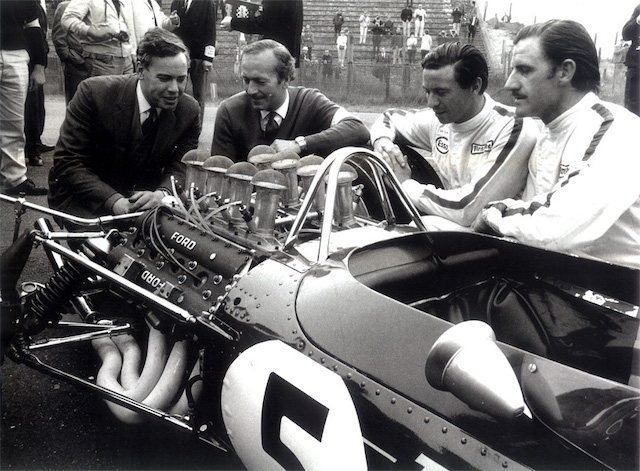
(Getty Images)
Dutch Grand Prix, Zandvoort, June, 1967. Keith Duckworth, Colin Chapman, Jim Clark and Graham Hill at the debut race for the brand-new Lotus 49 and the Cosworth DFV (Double Four Valve) V8, which was financed by the Ford Motor Company and designed by Duckworth (in partnership with Mike Costin). Chapman's idea was to reduce weight by using the new, advanced engine as a stressed part of the chassis, bolted straight on to the front monocoque tub, removing the need for a spaceframe around the engine and making it easier for mechanics to maintain the cars, an arrangement that has been standard in F1 ever since. At its debut race - the third race of the 1967 F1 season - the Lotus 49 with the Cosworth DFV was blistering quick from the get-go, with Graham Hill taking pole and Jim Clark winning the race. The DFV was made available to all F1 teams in 1968 and the rest, as they say, is F1 history.
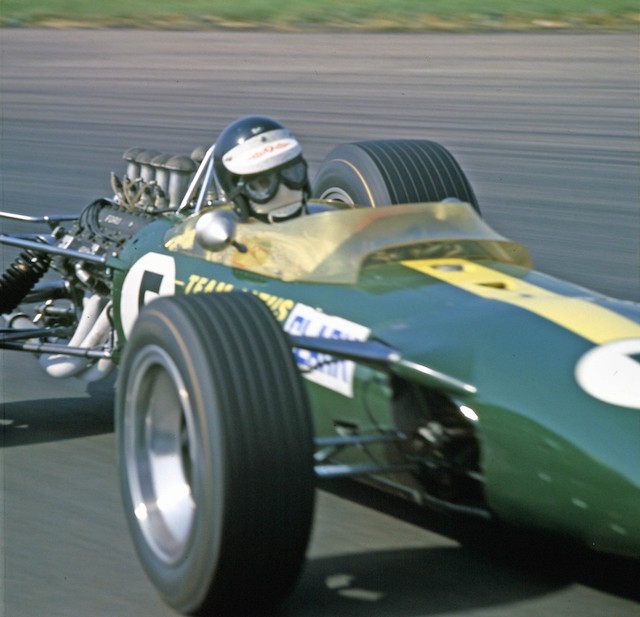
(Getty Images)
Dutch Grand Prix, Zandvoort, June 4, 1967. Jim Clark (No. 5 Lotus 49-Ford Cosworth DFV V8) on his way to the win. The chassis/engine combination was a brilliant success right out of the box. How dominant was Clark in the Lotus 49's debut race? Jack Brabham (No. 1 Brabham BT19 Repco V8) was second, 23.6 sec behind. Denny Hulme (No. 2 Brabham BT20 Repco V8) finished third.
(Getty Images)
One of my favorite images of Jim Clark captures everything about his brilliance behind the wheel. In the Lotus 49-Ford Cosworth DFV V8 - On. The. Gas.
(Dave Friedman)
Riverside International Raceway, October 11, 1964. Jim Clark raced in Saloon races in England and in major league international sports car races as well for Colin Chapman. Here he is in the L.A. Times Grand Prix for Sports Cars in his No. 15 Team Lotus 30-Ford. He finished third behind Parnelli Jones (No. 94 Shelby American Cooper King Cobra Ford) and Roger Penske (No. 6 Chaparral 2A Chevrolet).
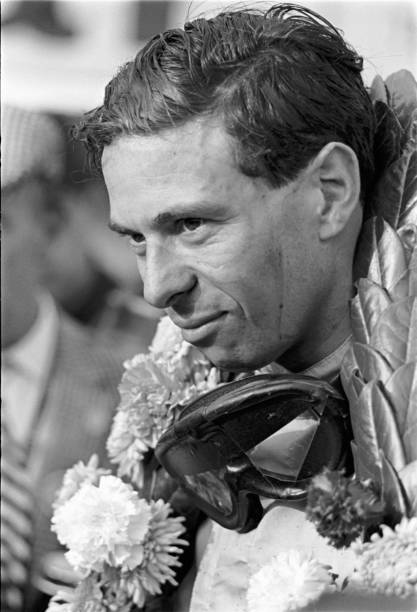
(Getty Images)
Spa-Francorchamps, June 9, 1963. Jim Clark after yet another dominant win in the Belgian Grand Prix. How dominant? Jim lapped all but one driver in his No. 1 Team Lotus 25 Climax. Bruce McLaren (No. 14 Cooper T66 Climax) was second, almost five full minutes behind. Dan Gurney (No. 18 Brabham BT7 Climax) finished third. As I mentioned, Clark competed in sports cars and touring cars, including Le Mans, and he also won three Tasman championships in a row in 1966, 1967 and 1968. Jim Clark was killed on April 7, 1968, at the Hockenheimring, driving in a Formula 2 race for Gold Leaf Team Lotus. Back then, it was not uncommon for F1 drivers to drive in F2 races, especially that season, which had a four-month gap between F1 races. The race was characterized as being a "minor" event, but the grid was filled with talented drivers such as Graham Hill (Clark's teammate), Derek Bell, Piers Courage, Jean-Pierre Beltois, Henri Pescarolo, Carlo Facetti and Clay Regazzoni. Clark's Lotus veered off the track on the fifth lap of the first heat and crashed into trees, the cause thought to be a rapidly deflating rear tire. He died on the way to the hospital. It remains one of the most tragic days in motorsport history. Clark's death affected the racing community terribly, with fellow Formula One drivers and close friends Graham Hill, Jackie Stewart, Dan Gurney, John Surtees, Chris Amon and Jack Brabham devastated by the tragedy. People came from all over the world to Clark's funeral. Colin Chapman was inconsolable and publicly stated that he had lost his best friend. The 1968 F1 Drivers' Championship was subsequently won by his Lotus teammate Graham Hill, who pulled the heartbroken team together and held off Jackie Stewart for the crown, which he later dedicated to Clark. For many racing enthusiasts of a certain age, Jim Clark will always be The Master, more so than Fangio, Stewart, Schumacher, Senna, Hamilton, et al.
Editor's Note: Click on "Next 1 Entries" at the bottom of this page to see previous issues. - WG
 Sunday, April 21, 2024 at 08:27AM
Sunday, April 21, 2024 at 08:27AM 
